Book review The Wooleen Way
Blue print for pastoralism puts emphasis where it has been missing for decades
By Patrick Francis
Australia’s pastoral industry now has a new champion who understands why livestock farmers must be pasture farmers first and livestock farmers second. In what is possibly the most insightful book ever written about Western Australian pastoralism David Pollock, in “The Wooleen Way” provides a blue print for recovering past degradation and establishing a sustainable future for this grazing industry.
While the book is written about personal experience on Wooleen Station, 300km east of Geraldton in Western Australia’s Southern Rangelands’ Murchison district, figure 1, many of the grazing management strategies presented by Pollock apply across all rangelands and even to a degree in the grazed agricultural districts.
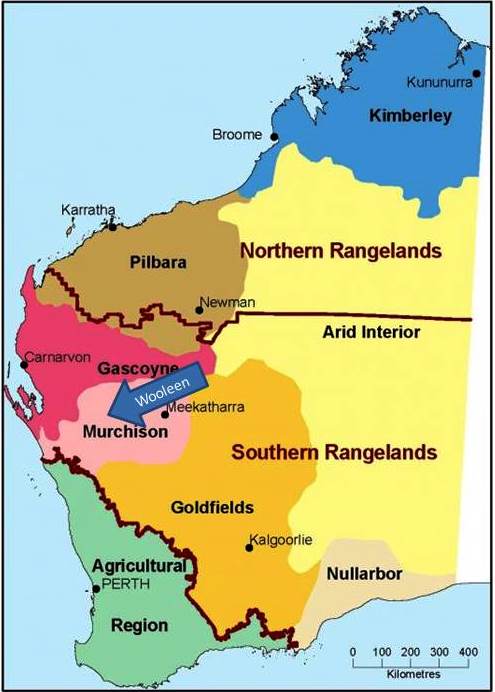
Figure 1: The WA rangelands cover about 2.2 million square kilometres (87% of WA, which is all but the south-west agricultural region), and pastoral stations for grazing livestock cover 40% (857 833km2) of that, based on active leases as at June 2016. The rest of the rangelands consist of land vested for conservation, Indigenous purposes and unallocated Crown land. The pastoral rangeland is divided into 2 areas based on dominant vegetation type: The Northern Rangelands, which contains the Kimberley (206 775km2) and the Pilbara (147 940km2) regions. This is characterised by grasslands. The Southern Rangelands, which is mostly south of the Pilbara region and between the south-west agricultural region and the arid interior. It contains the Gascoyne (138 650km2), Murchison (128 620km2) and the Goldfields–Nullarbor (235 850km2) regions. This is characterised by shrublands. In 2016, there were 491 registered pastoral leases in WA, held in 436 pastoral stations: 152 stations in the Northern Rangelands (92 in the Kimberley and 60 in the Pilbara); and 284 stations in the Southern Rangelands. Lease ownership includes large corporations, private companies, family operations, Indigenous organisations, and mining companies. Source: WA Department of Primary Industries and Regional Development.
Pollock’s insights into the connections between ecosystem functions, pastures and grazing management, put him into a rare group of outstanding farm/station ecosystem managers, observers, and influencers in the industry. People like Alan Lauder, a retired pastoralist from south west Queensland who wrote “Carbon Grazing”, and Terry McCosker, who brought holistic grazing management to Australia in the early 1990’s and started the RCS advisory business. He even has environmental insights similar to the famous USA ecologist, Aldo Leopold.
“The Wooleen Way” can be described as a biography with no stones unturned. Pollock describes his childhood, his family – mum, dad and brother, his time at school and ultimately the move to run and rehabilitate Wooleen Station which is situated in one of the most environmentally degraded pastoral districts in Australia. The Murchison/Gascoyne district in WA and the Western Division NSW have experienced severe pastoral land degradation, the result of more than a century of mostly sheep (sometimes cattle) and pest animals (goats and kangaroos) overstocking fragile grass and shrublands in regions with low and highly variable rainfall.
Pollock’s insights into the subtleties surrounding the connections between perennial grasses, annuals and shrub species, grazing behaviour of sheep, cattle, kangaroos and goats, and the timing and amount of rainfall enlighten the reader throughout the book. He is the consummate observer of his surroundings.
His connections observations give the book a wider audience than pastoralists. For instance, he refers to “droughts” being created by bad livestock management more than lack of rainfall: “Most of the droughts we have now are man-made. We have overgrazed the pasture over the past 130 years, and removed the vegetation that is supposed to keep stock alive during a dry time. Now we call it a drought, but this is just a dry part of a normal cycle. Drought should be something that is out of the ordinary (page 252).”
The same situation regularly happens in the high rainfall grazing zones whenever spring rains fail, which is far more common than pre-1997. The inability of many livestock owners to match stocking rates to paddock carrying capacity during these dryer times is almost universal.
While the story describing the issues encountered de-stocking Wooleen Station as a method to restore the perennial grasses and shrubs forms the backbone of this book, Pollock’s frank opinions about the deficiencies of some individuals and organisations supposedly supporting WA pastoralism are startling. They not only demonstrate the incompetence of many politicians and bureaucrats to change the way pastoralism is monitored and regulated so that its ecosystem functions can be restored, but highlight a contempt for anyone prepared to put their livelihoods on the line to achieve change.
The lack of legislative support (via the WA Lands Administration Act) for Pollock’s approach to repair his rangelands is difficult to comprehend given the enormous number of reports on land degradation in the rangelands since the 1930’s. There was even a parliamentary inquiry into Pastoral Leases in Western Australia in 2013 – 14 which reported on the topic of Environmental Damage on Pastoral Lands, that “received conflicting evidence on whether there has been environmental damage or not”. Pollock notes about this report: “After 130 years of overstocking, royal commissions, and government reports cataloguing the decline of the rangelands, they ‘received conflicting evidence’.”
Pollock’s comparisons of government oversight of WA rangelands compared with oversight of WA fisheries and WA mining demonstrate the depth of research he has undertaken over many years to back up his perspectives about rangeland management. What the fisheries and mining industries highlight is the inertia involved in the pastoral sector yet its ecological footprint is far more massive. He notes on page 209: “In 2013 – 14 year the fisheries department published 29 scientific papers, as well as contributing to three books, putting out 18 reports, five conferences/workshop papers and two popular articles. In contrast that year the department of lands was asked to contribute to one report that concerned the pastoral resource”.
He also points out that in 2012/13 WA fisheries prosecuted 450 people and business for infringements, compared with zero prosecution “ever” for infringements in the pastoral sector.
His mining land rehabilitation spending investigations highlight the lack of perspective in the community and amongst politicians. “Wooleen is 153,000 ha in area. Even given the recent mining boom and probable expansion in mine sites… Wooleen plus its smallest neighbour would be bigger than all the mines in Australia put together. And yet they spend at least $284 million per year on rehabilitation. WA mines alone spent $105 million on rehabilitation back in 2006… If there is a choice between spending millions of dollars trying to grow a handful of hardy (and therefore common) plants on a few hundred hectares of mining waste so that they appease the eye of passing tourists, or the option of restoring the ecological balance and landscape function over two million hectares of adjacent rangelands, surely we would opt for the latter?”
He demonstrates his power of holistic thinking when he suggests miners should be required to rehabilitate areas surrounding their mine sites and drill pads on their leases, figure 2. “Miners could be rehabilitating at the same time as they were mining.”
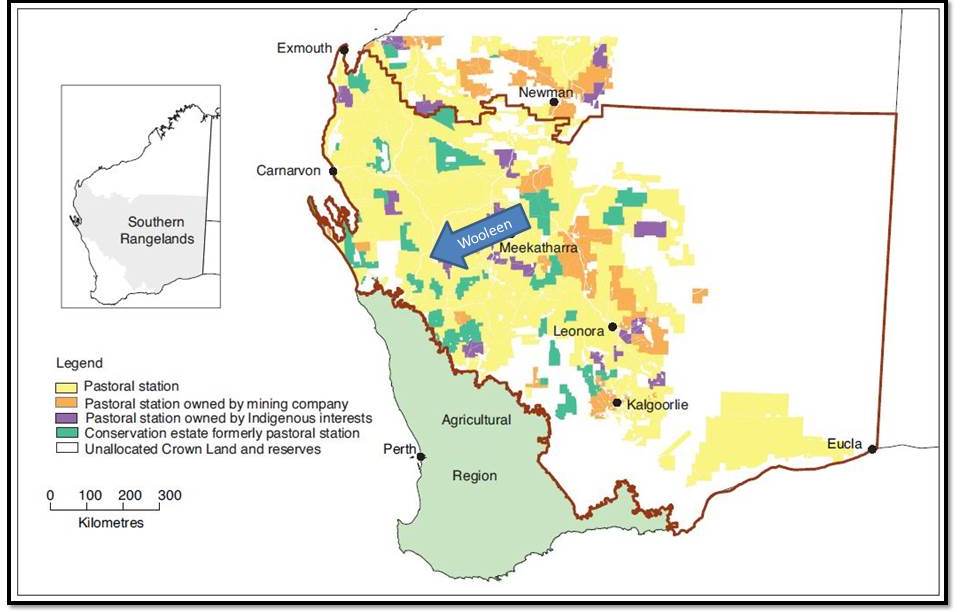
Figure 2: Mining companies have taken control over a considerable number of formerly pastoral stations. Source: WA Department of Primary Industries and Regional Development.
He calls this approach ‘Rehabilitation As You Go’. It would help overcome an important issue with miners who are required to rehabilitate land after mining is finished, but many go broke and disappear leaving their mining leases devastated. With Pollock’s scheme “it wouldn’t matter if the miners went broke. They would be required to spend a certain amount on environmental health every year that their mines were operating.”
Perhaps I’m being a bit optimistic in assuming that the government could organise itself to deliver this win-win scenario but I only see mental barriers to it. …What we need is funding for the large-scale regeneration of a renewable resource (the rangelands), and that it exists right in front of our eyes, yet we are not able to effectively use it.”
He finishes the mining versus pastoralism comparison with a particularly telling observation: “I’m not that worried about the miners….They have the money to pay for environmental protection, and they are accountable for it. On the other hand, the pastoral industry in the rangelands is on its knees – it cannot pay for anything, let alone environmental protection, and it is not held accountable for anything.”
Wooleen station photo point one, 2004 to 2019:
Shows the recovery of a palatable perennial grass, Sporobolus mitchelli. The recovery happened fast here because there were still some plants in the system. Initial bushes are Lignum (no grazing value), many of which died in the record 2006 floods. Saltbush, Atriplex amnicola (high grazing value), recovering and getting big by 2018. Some samphire (no grazing value) visible in 2009, but outcompeted by 2014. Caption & photos: David Pollock.

The lack of accountability for the health of the rangelands is a re-occurring and unsettling theme throughout this book. Pollock has researched the history of the degradation based on dozens of expert reports and even a Royal Commission post the 1930s drought. He understands what rangelands degradation is all about and what it means because Wooleen station is a classic example of what has happened. Despite this the politics of rangelands administration does everything it can to hide or play down the issues and potential solutions.
Pollock points the figure at the inflexibility of the Lands Administration Act and undue influence the pastoralists lobby organisation the Pastoralists & Graziers Association (PGA) has on the Pastoral Lands Board (PLB).
“A pastoral lease is very restrictive. The reason for this is simple enough, because a pastoral lease is supposed to be for pastoralism…. Other activities can occur there (on the lease), but permits and permission are needed from the PLB. … Tourism is permitted…but only if it is supplementary to the pastoral side of the business.”
Pollock contends the restrictive nature of the Lands Administration Act means continued degradation of the WA rangelands. “Until people have a good legal footing for diversifying into other land uses, there will be no large scale diversification and the ecological decline of the rangelands will continue. The PLB knows this … and often employs this sort of ‘head in the sand’ ethos in relation to problems that it doesn’t want to address.” The ethos referred to in this case was telling Pollock not to report how much money Wooleen made each year out of its tourism business, because under the Act a lease is not allowed to make more money out of tourism than pastoralism!
A simple solution would seem to be a different sort of lease to a pastoral lease. “The answer is as simple as it is hard to comprehend, no other sort of lease exists. We are all stuck with a lease that insists that we must be predominately pastoral, even though the land desperately needs a break from pastoralism.”
In 2016 the then Minister for Lands and National Party leader tried to introduce a new rangelands lease which would allow for a variety of low-impact land uses such as tourism. But the proposed bill never made it to parliament, because according to the minister it was railroaded by the PGA. For Pollock this episode highlighted the power the PGA has in WA politics. “It also highlights the lengths it is willing to go to in order to maintain the status quo in the pastoral industry.”
The connection between the PGA and administration of pastoral land is made via the Pastoral Lands Board which has a minimum three members out of eight, who are or have been pastoralists. More often than not over its history five board members have been pastoralists. Pollock’s view of the two organisations is that they are so intertwined that the regulator, the PLB, mostly acts as a lobby group for the pastoral industry. “The PGA and the PLB will deny this, but the proof as they say is in the pudding.”
The proof he is talking about can be found in the Boards five functions that are designed to sustain the pastoral resource. These functions relate to:
* pastoral land monitoring
* leases are managed on an ecologically sustainable basis
* preventing degradation of the rangelands
* rehabilitating degraded rangelands, and
* monitor numbers and effects of livestock and feral animals on rangelands.
In Pollock’s opinion the Board is failing in all these functions. His revelations about why are sometimes mind boggling but are not peculiar to WA bureaucracies, they can be seen to varying extents across resources departments in other states often supported by state farmer lobby groups which are keen to avoid effective environmental regulations being introduced on farm land. In contrast, in NSW and Queensland environment departments are sometimes too heavy handed when it comes to how farmers manage native vegetation.
A clue to why the PGA wants to maintain the status quo with regard to PLB functions is revealed by Pollock late in the book. “One of the main reasons the pastoralists have not tried to publicise the myriad of problems that are affecting their industry is many want to sell their properties. The last thing they want is to do is draw attention to all of the problems that make their businesses unviable.”
He says a 2011 report written by the Department of Agriculture into the viability of WA pastoral release was kept confidential for three years and only released after requested under freedom of information laws. “It was kept secret because it reported that only 77 out of 292 leases in the Southern Rangelands were considered viable, with another 10 leases possibly viable if they were destocked for five years. …Wooleen was one of those considered unviable… I think the situation is worse (than the report indicates).”
Wooleen station photo point two, 2004 to 2019:
No palatable perennials in the first photo, the plants are an undesirable annual saltbush (Atriplex codonocarpa). Marieana tormentosa (high grazing value) is the bluebush that has recolonised this area. Included this one because it doesn’t appear to have recovered that well. But this is perhaps not surprising given that it was originally just blowing sand. I believe the soil needs to gain more humus in order to sustain the perennials that died in the dry period between July 2018 and April 2019. 22mm fell in this period, with the largest fall being 6mm. In better areas they survived. Only around 40% of the bluebushes survived from 2018 into the 2019 photo. Caption & photos: David Pollock.

His solutions
The most intriguing chapter covers Pollock’s solution for repairing the degraded Southern Rangelands then ensuring management is undertaken to give pastoralism a sustainable future. His faith that an ecological based pastoralism has a long-term future is testimony to his understanding of natural cycles and interactions with livestock. In contrast many ecologists in private and government institutions want to lock up degraded land and exclude livestock as being the answer to environmental recovery.
His solutions for rangeland recovery are not new in themselves but when packaged together which is necessary for success, present the WA government, agri-businesses and tax payers with an enormous transformation thinking challenge. His plan involves implementing actions for each of the five PLB functions listed above:
* Establish and evaluate a system of pastoral monitoring sites. “Without monitoring the resource nobody knows what’s going on. Without monitoring, there is no science, no analysis and no credibility – and ultimately, no valid arguments as to likely solutions.
* Monitor the numbers and effect of stock and feral animals on pastoral land.
* Ensure that pastoral leases are managed on an ecological sustainable basis. “Regulation will be a good start. Facilitating a shift from small livestock (sheep or goats) to cattle would be another.”
* Allow diversification on rangeland leases.
* Develop policies to rehabilitate degraded or eroded rangelands and restore their pastoral potential.
Firstly, “we should stop spending so much money on trying to kill the dingo, and recognise it for the extraordinary asset that it is.” Secondly, reseed the rangelands. “…the species that pastoral production relies upon must be helped back into the landscape.” Thirdly, introduce Stewardship tender payments for destocking. “Stewardship would involve pastoralists being financially supported so that they can rest their land to recover from historic degradation (for up to 10 years).”
Wooleen station photo point three, 2004 to 2019:
Only one palatable perennial, Scaevola spinescens (high grazing value but also very resistant to grazing) visible. Site improves to add desirable palatable perennials such as Ruby saltbush (Enchylaena tormentosa), Berrigan (Eremophila longifolia), Rhagodia (Rhagodia drummondii), Birdwood grass (cenchrus ciliaris), bluebush (Maireana tormentosa) and others. Caption & photos: David Pollock.

Despite all the effort Pollock is putting in to achieve sustainable land use and sustainable pastoralism for all the leases in the Southern Rangeland, he recognises many of his peers have disowned him. “I need to stay as relevant as possible to my pastoral peers if I’m going to be in effective agent for change within the industry. The longer I destock, the less they will accept that I am one of their peers. I have left it too late already for many who no longer regard me as a pastoralist. This inhibits my ability to promote conservation on their land by influencing their management of it.
“To them, I am not in the pastoral industry; I am in the tourism industry, … a retired pastoralist. …I believe that the PGA doesn’t want to refer to me as a pastoralist so that it can distance itself from what we are doing, to emphasise that it is something unattainable (or undesirable) for pastoralists.”
Take home messages
“The Wooleen Way” is in effect one of the best whole property case studies you could ever read about the connections between restoring ecological functions while retaining a viable grazing enterprise. It builds on the proposition that all agricultural businesses must first and foremost be managed around owners protecting their properties ecosystem functions so the constant threats from total grazing pressure in a fragile environment with highly variable rainfall are avoided. Failing to do so puts the farm ecosystem functions into a tail spin of degradation which eventually lead to business failure.
Pollock explains it very simply: “Farmers should never be in the situation of having to decide between ecological decline or financial survival. Because if they are in this position, and they choose financial survival, we all lose.”
Wooleen Station was in this position but fortunately for his family and the nation, Pollock had the determination and insights into nature’s connections to manage the restoration of ecosystems across the property which eventually lead to business profitability. While this is such an important story to tell, the book also highlights the lack of understanding amongst some pastoralists, state bureaucracies, farmer lobby groups, and agri-businesses such as banks, about linking healthy ecosystem functions to farm business profitability. It is a momentous issue which this author has successfully brought to the Australian public’s attention.
Pollock’s story has a public face as a result of a number ABC Australian Story episodes starting in 2012. It has given him and his partner, Frances, a degree of celebrity status. In this instance such status is well deserved and has worked for the good of the family, through public support in their quest to restore degraded rangeland, increased tourist and volunteer visitors, and even cash donations. But celebrity status needs to be treated cautiously especially in relation to animal agriculture because it is virtually impossible for short programs to tell the personal story as well as the ecosystem and livestock science involved. Pollock reflected on this when he said: “I think that all of us are more likely to believe people if we’ve seen them on TV. Having experienced this at first hand, I find it a bit disconcerting”.
“The Wooleen Way” is highly recommended reading for everyone involved with livestock grazing and in bureaucracies and agri-businesses involved with it across pastoral and farming zones. Many in these sectors may be offended by the frank assessments he makes, but that content makes the book so compelling and thought provoking. It should be compulsory reading for agricultural and environmental science tertiary students. It provides more practical insights and understanding about the connections between ecosystem functions and grazing management (livestock, feral and native animals) than any other book I have read on the topic.
The last words of this review should be Pollock’s: “It is no doubt possible to fix the landscape and have stock on it at the same time, but it is a very slow process, and demands an extraordinary understanding of ecology and dedication to grazing management. I don’t know many pastoralists who could do it, and even they can only afford to do so because they derive most of their income from diversification. Wooleen is in this category. … We all benefit from new ideas and new pathways to sustainability.’
Find out more: Published by Scribe, RRP $35, www.scribepublications.com.au
Wooleen station photo point four, 2004 to 2019:
Similar recovery to photo point three. Only desirable palatable perennial is a silver Speargrass (Stipa elegantissima)under tree on the left. Now contains all the desirable perennials in photo point three except Birdwood. Also contains moderately palatable Flannelbush (Solanum lasiophyllum) Also contains healing erosion, but the cattle aggravated it in 2018. Caption & photos: David Pollock.

Box story: ‘Pollockisms’ to think about
Pollock provides readers with outstanding insights about connections between livestock grazing, total grazing pressure and rangeland ecosystem functions. Here are some gems:
* “If you can’t manage the animals in your landscape, I think you are foolish to say that you are managing it at all.”
* “There is currently no regulatory monitoring of this precious Australian resource (Wooleen lake), and if I chose through greed or ignorance to continue to overgraze it out of existence, nobody would know until it was much too late.”
* “We have no mechanism for dealing with drought. No mechanism to allow the land to recover after a drought. And yet we live in an environment where droughts are common.”
* “There are two main parts to establishing a sustainable grazing system on Wooleen. The first part is to recover the pasture. …The second part is to learn to manage the pasture in such a way that doesn’t degrade it again.”
* “There is no such thing as ‘pristine’ in the Southern Rangelands. The landscape is ever changing and evolving, and being shaped by different processes, including those introduced by humans.”
* “I believe that the real conservation gains of the 21st century will be made not by engaging in pure conservation, but in sustainable production. That is why we need to support our land managers and our food producers.”
* “I believe the long-term productive future of the rangelands in a meat-eating world rests on the shoulders of the humble cow.”
* “It (the rangeland) is a renewable resource, which means that if we use it without overstretching its capacity, we should be able to use it indefinitely.”
* “Two things are not negotiable: landscape function and biodiversity.”
* “Without monitoring the resource, nobody knows what’s going on. The Australian people have no idea whether the management of their resource is appropriate.”
* “Another very cheap way to discourage pastoralists from degrading their land would be to publish the monitoring results of individual properties. … (it) would create a whole lot of angst amongst the worst environmental offenders and let Australians know what was really happening on their land.”
* “The situation where the (rangelands) regulators are in bed with the industry is unacceptable.”
* We need a board (PLB) that understands the importance of landscape function and diversity, and a board that is prepared to terminate the lease of anybody who has a disregard for best environmental practice.”

Store cattle in a rejuvenated paddock on Wooleen which was stocked between January 2018 and November 2018. “We didn’t weigh them when we purchased them, but they were in very poor condition. The truckie refused to cart the worst of them. Planning to sell them around November 2019. They are fat cows now, even the oldest ones.” Caption & photo: David Pollock.

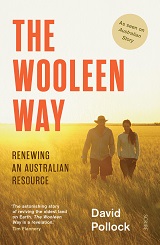
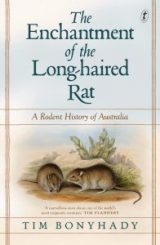
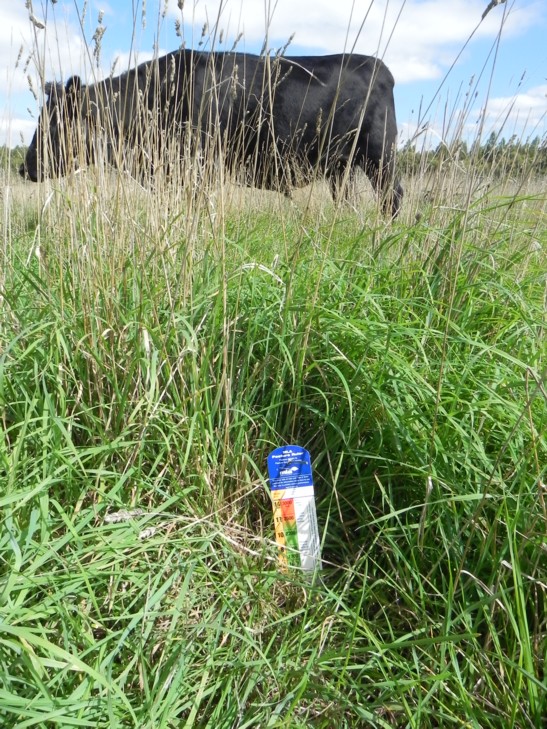
David and Francis, you are to be congratulated for having the foresight to create the vision you have for the future of grazing in the Rangelands and also for having the courage and commitment to follow your instincts rather than your bank balance. In this world of changing climates, unstable economies and communities becoming increasingly fearful of their future and especially the future for their succeeding generations, having “leaders” who are prepared to challenge the powerful establishment and to shine a light on the path to a sustainable regenerative future is invaluable. However, it is imperative that you maintain the respect and acceptance of your peers, because your good work only achieves its full value if others are inspired to follow your lead. You two are both of a young enough generation to either suffer the consequences of the whole community failing to take up the challenge, or to reap the rewards of inspiring a revolution. We have visited Wooleen in the past and were very impressed by what you had achieved to that point. Now I am keen to read The Woolen Way.